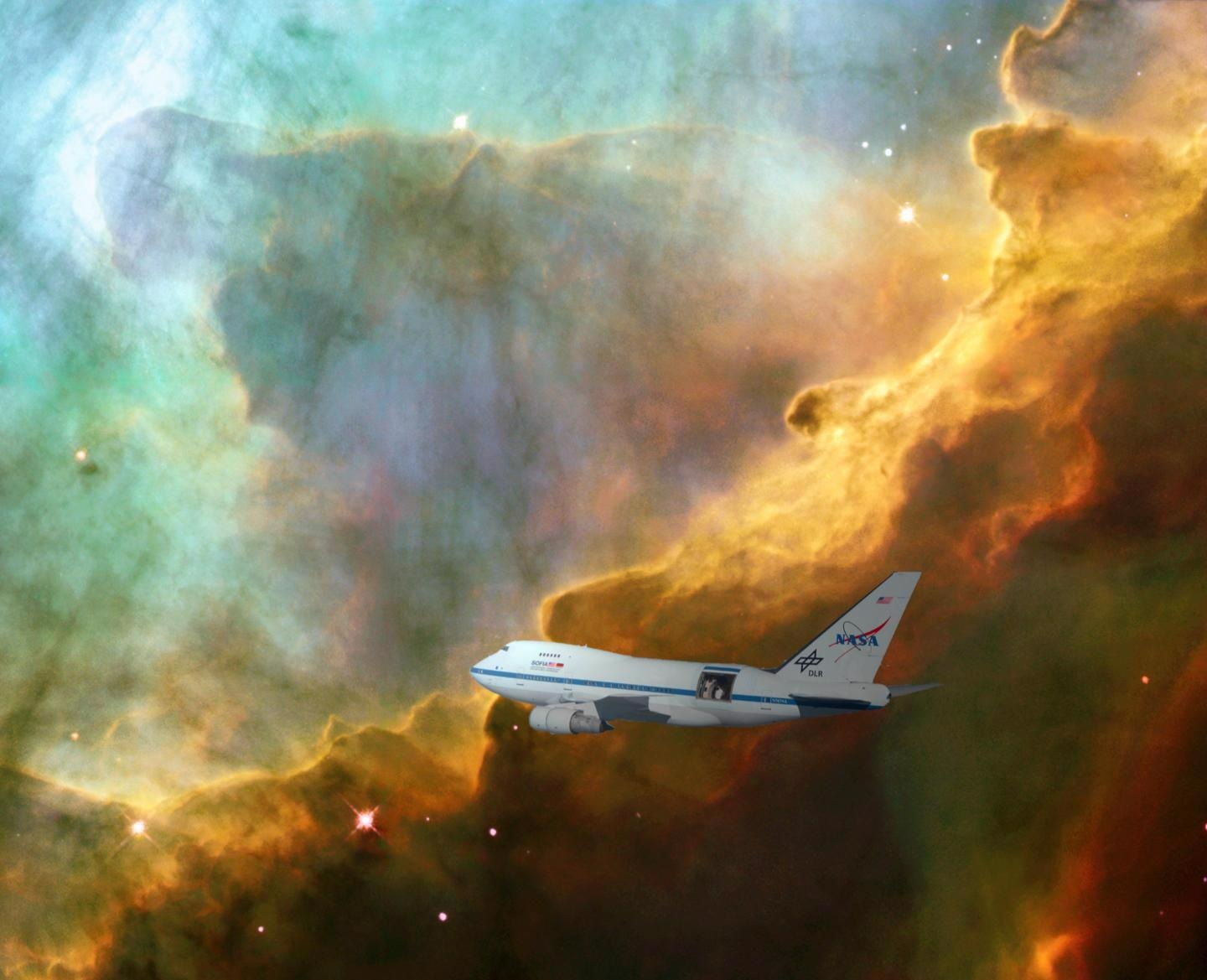Jun 24 2021
The first high-resolution image of an expanding bubble of ionized gas and hot plasma where stars are born has been made by scientists from the University of Maryland.
 A team led by UMD Astronomers created the first clear image of an expanding bubble of stellar gas where stars are born using data from NASA’s SOFIA telescope on board a heavily modified 747 jet. Image Credit: Artist Rendering by Marc Pound/UMD.
A team led by UMD Astronomers created the first clear image of an expanding bubble of stellar gas where stars are born using data from NASA’s SOFIA telescope on board a heavily modified 747 jet. Image Credit: Artist Rendering by Marc Pound/UMD.
Earlier low-resolution images were not clear enough to show the bubble or disclose how it extended into the encircling gas.
The information gathered by the Stratospheric Observatory for Infrared Astronomy (SOFIA) telescope was utilized by the scientists to examine one of the brightest and largest star-forming regions in the Milky Way galaxy.
Their study demonstrated that a single, enlarging bubble of warm gas encircles the Westerlund 2 star cluster and invalidated previous studies indicating there may be two bubbles encircling Westerlund 2. The team also found the source of the bubble and the energy that drives its expansion. Their study findings were published in The Astrophysical Journal on June 23rd, 2021.
When massive stars form, they blow off much stronger ejections of protons, electrons and atoms of heavy metal, compared to our sun. These ejections are called stellar winds, and extreme stellar winds are capable of blowing and shaping bubbles in the surrounding clouds of cold, dense gas.
Maitraiyee Tiwari, Study Lead Author and Postdoctoral Associate, Department of Astronomy, University of Maryland
“We observed just such a bubble centered around the brightest cluster of stars in this region of the galaxy, and we were able to measure its radius, mass and the speed at which it is expanding,” added Tiwari.
The surfaces of such enlarging bubbles are composed of a dense gas of ionized carbon, and thus form a kind of outer shell encircling the bubbles. New stars are thought to develop inside these shells.
However, similar to a soup in a boiling cauldron, the bubbles surrounding these star clusters tend to intersect and blend with clouds of surrounding gas, which makes it difficult to differentiate the surfaces of separate bubbles.
A better picture of the bubble encircling Westerlund 2 has been made by Tiwari together with her collaborators by quantifying the radiation discharged from the cluster throughout the complete electromagnetic spectrum, from high-energy X-rays to low-energy radio waves.
Earlier studies, which only provide radio and submillimeter wavelength data, had generated low-resolution images and did not display the bubble. A far-infrared wavelength discharged by a particular ion of carbon present in the shell is one of the most essential measurements.
We can use spectroscopy to actually tell how fast this carbon is moving either towards or away from us. This technique uses the Doppler effect, the same effect that causes a train's horn to change pitch as it passes you. In our case, the color changes slightly depending on the velocity of the carbon ions.
Ramsey Karim (M.S. ’19, astronomy), Study Co-Author and PhD Student in Astronomy, University of Maryland
Tiwari and Karim could develop a 3D view of the enlarging stellar-wind bubble encircling Westerlund 2 by finding if there was a movement of carbon ions toward or distant from Earth and integrating that data with measurements from the remaining electromagnetic spectrum.
Besides determining a single, stellar wind-driven bubble surrounding Westerlund 2, proof of new stars forming in the shell region of this bubble was discovered. Moreover, their analysis indicates that as the bubble got expanded, it broke open on one side, thereby discharging hot plasma and decelerating the expansion of the shell approximately a million years ago.
On the other hand, around 200,000 or 300,000 years ago, another bright star emerged in Westerlund 2, and its energy re-invigorated the expansion of the Westerlund 2 shell.
We saw that the expansion of the bubble surrounding Westerlund 2 was reaccelerated by winds from another very massive star, and that started the process of expansion and star formation all over again. This suggests stars will continue to be born in this shell for a long time, but as this process goes on, the new stars will become less and less massive.
Maitraiyee Tiwari, Study Lead Author and Postdoctoral Associate, Department of Astronomy, University of Maryland
At present, Tiwari and her collaborators have planned to apply their technique to other bright star clusters and warm gas bubbles to gain better insights into these star-forming regions of the galaxy. The study is part of a multi-year NASA-supported program known as FEEDBACK.
The other co-authors of the study from UMD’s Department of Astronomy include Research Scientists Marc Pound, Mark Wolfire and Adjunct Professor Alexander Tielens.
This study was financially supported by the NASA-funded FEEDBACK project (Award No. SOF070077).
Journal Reference:
Tiwari, M., et al. (2021) SOFIA FEEDBACK Survey: Exploring the Dynamics of the Stellar Wind-Driven Shell of RCW 49. Astrophysical Journal. doi.org/10.3847/1538-4357/abf6ce.